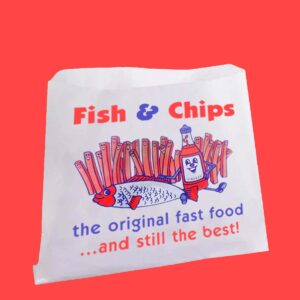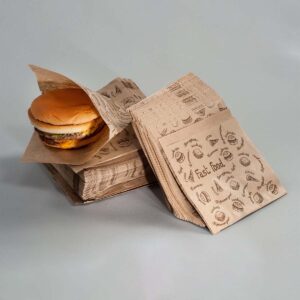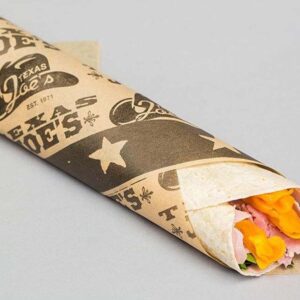Description
Custom Pizza Liner: A Hygienic Choice for Takeout and Delivery
Why a liner matters in modern pizza packaging
Takeout and delivery have changed how pizzerias serve customers, but the risks are the same: grease seepage, soggy bases, and contact contamination. A liner adds a clean barrier between food and box fibers, keeping toppings stable and crusts drier during transit. Midway through this first paragraph, it helps to name the solution clearly—Custom Pizza Liner—so decision-makers can align teams on a single, precise spec for hygiene and consistency. When done well, the liner supports food safety, protects brand reputation, and reduces complaints about oil stains or limp slices.
Food safety and contact control
Custom Food Printed Papers are another effective option for businesses that want to keep packaging clean while maintaining a branded appearance. These papers combine hygiene with design flexibility, giving pizzerias and restaurants more control over how their food looks and feels when it reaches the customer.
Direct contact between hot cheese and raw board can lead to fiber transfer and off-odors. A properly specified liner limits that contact, lowering contamination risk while making post-bake handling cleaner. Staff can cut, box, and hand off orders without the box surface touching the food, which improves confidence during rush hours.
Cleaner handoffs in takeout and delivery
Couriers stack boxes, tilt bags, and open lids for address checks. A liner keeps toppings and crumbs in place during these moments. It also creates a tidy surface for slice separation, which reduces sticking and tearing when customers share a pie at home or in the office.
Custom Pizza Liner — materials and barrier design
Not all liners behave the same. Grease-proof papers, PE-coated sheets, and compostable barrier papers each offer different balances of oil resistance, heat tolerance, and sustainability. The goal is to match liner performance to pizza style and travel time. For deep, oily pies or loaded toppings, higher oil holdout with light venting helps. For thin crusts, breathable papers preserve snap.
Grease, moisture, and crumb control
A good liner absorbs or repels oil in a controlled way. If it absorbs too much, the crust dries out; if it repels too much, surface oil pools. Specifying basis weight and porosity helps hit the sweet spot. Texture matters, too: light micro-embossing lifts the pizza slightly, creating channels for steam and crumbs, which keeps slices cleaner and easier to lift.
Liner Material Comparison
| Material Type | Oil Resistance | Breathability | Heat Tolerance | Typical Uses |
|---|---|---|---|---|
| Grease-proof paper (uncoated) | Medium | High | Medium | Thin-crust pies, short routes |
| PE-coated paper | High | Low–Medium | High | Deep-dish, high-oil toppings, longer routes |
| Compostable barrier paper | Medium–High | Medium | Medium | Eco-focused programs with moderate oil |
| Micro-embossed sheet | Medium | Medium–High | Medium | Crust lift, crumb channels, slice service |
Heat balance and crust quality
Delivery time is a heat-management problem. Liners with micro-vents allow steam to escape while retaining enough warmth to keep cheese supple. This balance reduces the “cardboard sweat” effect that softens bases. Matching vent pattern to box venting avoids condensation cycles that lead to sogginess.
Sizing, dielines, and integration with your box
Fit impacts performance. Oversized sheets buckle; undersized sheets expose corners to oil stains. For whole pies, use round cuts that match common diameters, plus a small tolerance for box variance. For slice service, rectangular or wedge formats speed assembly and reduce trimming waste. Clear dielines let teams reorder without guesswork.
Whole pie and slice formats
Round sheets (7–20 inch) suit standard boxes, while wedges suit by-the-slice counters. For party trays, consider half-moon pairs that overlap neatly. Keep a margin from box walls to prevent capillary oil creep that can stain outer faces.
Size and Format Guide
| Feature | Details | Material Options | Finishing Choices | Add-ons & Features | Usage/Application |
|---|---|---|---|---|---|
| 8–10 in Personal | Round cut liner Recommended: 9–10 in diameter |
Food-grade liner paper | Standard smooth finish | Micro cut edges, perforation options | Fits 8–10 in pizza boxes Leave 5–8 mm from walls |
| 12 in Medium | Round liner Recommended: 12–12.25 in diameter |
Kraft or white liner | Matte or Gloss coating | Vent alignment cuts | Align with box vents for steam control |
| 14 in Large | Round liner Recommended: 14–14.25 in diameter |
Heavy basis paper | Spot UV or Matte | Micro-vent die cuts | Suitable for large pizza boxes Helps steam escape |
| 16 in Extra Large | Round liner Recommended: 16–16.25 in diameter |
Extra-thick liner | Moisture-resistant coat | Reinforced edges | Ideal for heavier pizzas Prevents soggy base |
| By-the-slice | Wedge or rectangle cut Standard: 6×9 in or custom wedge shape |
Greaseproof liner | Non-reflective finish | Die-cut wedge shape | Speeds counter service Great for single slices |
Vents, tabs, and fold cues
Tabs help staff lift the sheet during checks without touching food. Light fold cues allow a quick “liner tent” under extra-saucy sections, protecting the lid during bumps. If you print cutting guides, ensure they are food-safe and faint enough not to transfer.
Printing, branding, and regulatory notes
A liner can carry brand identity without clutter. One-color logos, pattern repeats, or subtle watermarks project a tidy image at unboxing. Compliance still leads: food-contact inks, migration limits, and clear allergen messaging matter more than decoration.
Custom Food Paper is often used to highlight branding while keeping packaging safe. It offers an easy way to print logos, slogans, or promotional designs without affecting the food inside. This option helps businesses stand out in a crowded market while staying cost-effective.
Inks, approvals, and allergen statements
Specify food-contact compliant inks and adhesives. Keep printed zones away from the heaviest oil pools to reduce smudge risk. If your kitchen handles nuts, dairy, or gluten, a small, readable notice on the liner edge reinforces transparency for customers.
Codes, campaigns, and reuse value
QR codes can link to reheating tips, feedback forms, or loyalty rewards. Batch codes aid traceability if there is a quality concern. Some teams design liners that double as placemats during office lunches, adding practical value without extra cost.
Operations, cost, and sustainability
Liners should speed the line, not slow it. Pre-cut stacks near the make table reduce grab time. For cost control, align sheet counts per case with nightly volume to limit partial stacks and waste. Sustainability depends on both material and disposal clarity.
Assembly speed and staff workflow
Aim for a motion-efficient sequence: place liner, position pizza, cut, box, close. Anti-static packaging prevents cling during fast pulls. Train staff to orient any printed seals away from cut paths so ink sees less direct blade contact.
Paper sourcing and end-of-life
If you need eco signals, consider recycled content or compostable barrier papers where local facilities accept them. Offer simple disposal guidance on the box flap: “Remove food scraps. Recycle or compost where accepted.” Customers respond to clear, honest directions rather than broad claims.
Testing before rollout
A short test plan protects margins and reputation. Simulate peak orders, driver routes, and dwell times to assess liner behavior. Record grease maps, crust texture, and customer notes. Adjust basis weight or venting if slice integrity drops after 20–30 minutes.
Bench tests: soak time and ply strength
Run timed drop tests for oil holdout, then check for fiber lift on cheese contact points. Verify ply strength when wet; weak sheets tear under gooey toppings. Confirm that printed areas resist smearing at delivery temperatures.
Quick Test Plan and Targets
| Description | Details | Method | Target Range | Pass Indicator |
|---|---|---|---|---|
| Oil Holdout | Ability to resist grease/oil penetration from hot pizza or baked items | 20–30 min soak with hot pie | No bleed-through to outer base | Base remains dry to touch |
| Steam Management | Prevents excess steam buildup, maintains crust texture | Box + liner vent alignment | Minimal lid condensation | Crust firmness score ≥ 4/5 |
| Wet Strength | Structural durability of box after exposure to food moisture | Pull test after 10 min dwell | Sheet lifts without tearing | No tear at tabs/edges |
| Ink Fastness | Resistance of printed surface to smearing at serving temperature | Rub test at delivery temp | No visible smear | Printed artwork/pattern stays intact |
Pilot feedback and data to capture
During a one-week pilot, track remake rates due to soggy bases or stained boxes. Ask couriers about box handling and tilt. Survey a small set of customers on slice separation, lid cleanliness, and first bite texture.
Practical spec checklist for buyers
Clear specs help operations, purchasing, and suppliers stay aligned. Keep the sheet concise and focused on the details that influence outcomes.
What to specify now
• Material type and basis weight
• Barrier rating for oil and moisture
• Cut shape and diameter or wedge dimensions
• Vent pattern (open area percentage, orientation)
• Print method, ink standard, and safe zones
• Packaging format per case and target daily usage
• Compliance notes and acceptable certifications
Guidance for takeout teams
Pizza travels better when small details work together: box venting, liner porosity, and cut workflow. Treat the liner as part of the recipe, not an afterthought. Align material, size, and venting with your pizza style and route times, then validate with quick tests. A consistent setup turns busy nights into smooth shifts and keeps customers satisfied after every delivery.













